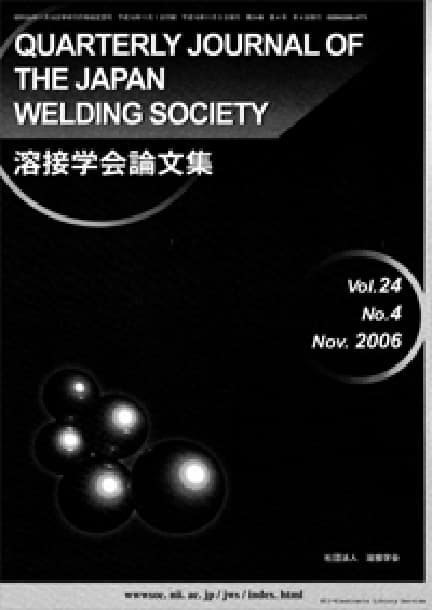Surface Modification with Cu on Zr-Based Metallic Glass Using Laser Cladding and Improvement of Solder Wettability
Takeshi TERAJIMA, Kazuki SHINSHI
pp. 257-262
DOI:
10.2207/qjjws.41.257Abstract
Zr55Al10Ni5Cu30 metallic glass (bulk amorphous alloy) have unique properties such as highly resistant to corrosion, high strength and elastic deformation over whole deformation range, so that it is expected to be the next-generation machine materials. To develop further industrial applications, joining technology for the metallic glass is necessary. In this study, surface modification with Cu on Zr55Al10Ni5Cu30 metallic glass using laser cladding and the consequent solderability improvement were studied. As a result, the interface between Cu thin film and Zr55Al10Ni5Cu30 metallic glass were continuously welded by the laser cladding. XRD showed that there are no crystalline and reaction layer in the weld interface. Furthermore, it was found, by XPS, that the Cu modified layer on the Zr55Al10Ni5Cu30 metallic glass surface inhibited the formation of a strong oxide film. Consequently, the Cu modified layer played an important role in improving the solderability to the Zr55Al10Ni5Cu30 metallic glass.










